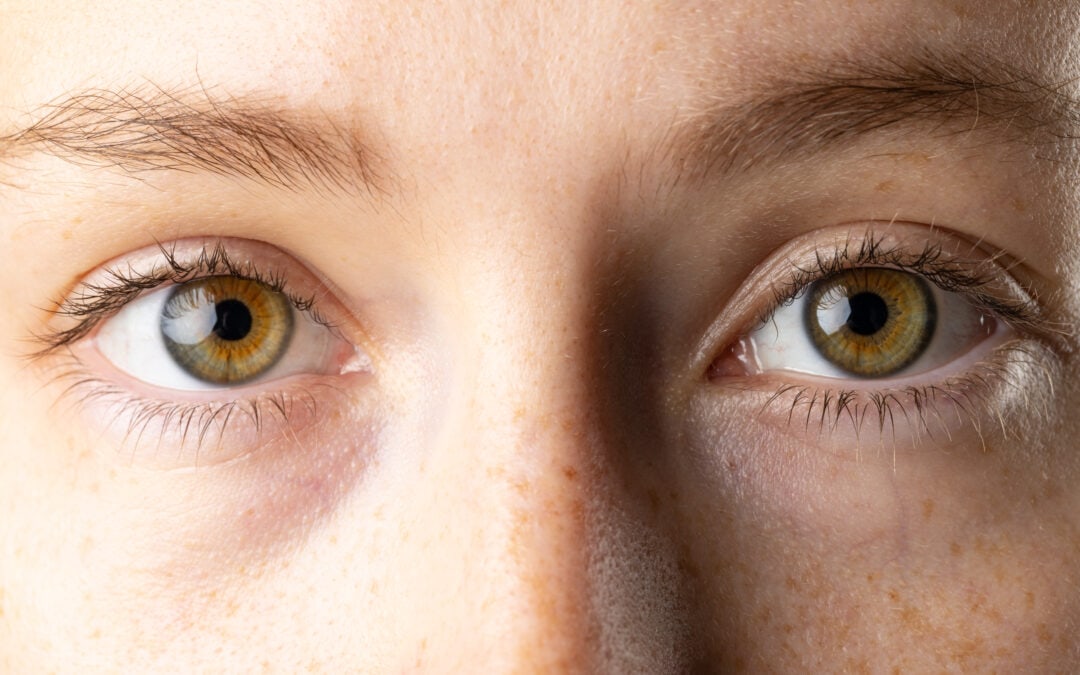If you have sleep apnea, you are approximately ten times more likely to have glaucoma. This startling statistic underscores a crucial link between two seemingly unrelated conditions: sleep apnea and glaucoma.
As researchers continue to unravel the complexities of these disorders, questions linger about the underlying mechanisms driving this association. This article will delve into the intriguing connection between sleep apnea and glaucoma, shedding light on what you need to know about their relationship and potential implications for your eye health.
What Is Glaucoma?
If you’re dealing with sleep apnea and there is an increased risk of glaucoma, it is essential to understand what glaucoma is. Glaucoma is a disease that damages your eye’s optic nerve. This damage usually occurs when there is fluid buildup in the front part of your eye, thereby increasing pressure and damaging the optic nerve.
Symptoms of Glaucoma
Because glaucoma typically progresses slowly and doesn’t have noticeable symptoms until irreversible damage has occurred, it is often referred to as the “silent thief of sight.” The first sign of glaucoma is usually peripheral vision loss, which may not be immediately apparent to the individual.
The symptoms of glaucoma may vary depending on the type and stage of the disease. In addition to the loss of peripheral vision, other symptoms may include:
- Blurred vision
- Halo effects around lights
- Eye pain or redness
- Tunnel vision in advanced stages
- Nausea or vomiting accompanied by severe eye pain
- Seeing spots or colored rings around lights
- Sudden onset of vision problems, particularly in low-light conditions
By the time the visual symptoms become noticeable, the disease may have already advanced significantly. Regular eye exams, particularly for individuals at higher risk, such as those with sleep apnea, are crucial for early detection and treatment.
What is Sleep Apnea?
Sleep apnea is a sleep disorder characterized by interruptions in breathing while you sleep. There are two main forms of sleep apnea.
- Obstructive Sleep Apnea (OSA) is the most common type of sleep apnea. It occurs when the muscles in the throat relax, leading to a narrowed or blocked airway.
- Central Sleep Apnea (CSA) occurs when the signals between the brain and the muscles that control breathing are disrupted.
Symptoms of sleep apnea can include snoring, gasping for air during sleep, daytime drowsiness, and headaches when you wake up. If left untreated, sleep apnea can lead to various health issues, including cardiovascular disease, diabetes, and cognitive impairment.
How Sleep Apnea Affects Your Eyes
Sleep apnea can have profound effects on various aspects of your health, including your eyes. The retina and optic nerve, crucial components of the visual system, rely on consistent blood flow and oxygen supply to function optimally. However, sleep apnea disrupts these vital processes, damaging your eyes.
One of the primary mechanisms through which sleep apnea impacts the eyes is by causing vascular changes. Episodes of sleep apnea result in fluctuations in blood oxygen levels, leading to hypoxia or low oxygen levels in the body tissue. This hypoxic state can induce damage to the eye’s neurons and cells, particularly affecting the optic nerve and retinal ganglion cells.
Additionally, nocturnal hypotension, common in individuals with sleep apnea, and hypertension, a common comorbidity, further elevate the risk of glaucoma by increasing intraocular pressure. Managing sleep apnea promptly is vital for preserving ocular health and mitigating the risk of eye-related complications, including glaucoma.
Treating OSA Can Help!
While glaucoma damage is permanent, effective management of sleep apnea can not only improve sleep quality and overall health but also potentially reduce the risk of developing or worsening glaucoma. If left untreated, sleep apnea can cause many long-term health issues. Eyesight is just one of them.
Continuous positive airway pressure (CPAP) therapy, the primary treatment for sleep apnea, helps keep the airway open during sleep by delivering a steady stream of air through a mask. CPAP therapy ensures adequate oxygenation throughout the body, including the eyes, by preventing the repetitive pauses in breathing characteristic of sleep apnea.
Additionally, lifestyle modifications such as weight loss, regular exercise, and avoiding alcohol and sedatives before bedtime can also contribute to reducing the severity of OSA and its associated risks. Managing sleep apnea effectively can have far-reaching benefits for both sleep and eye health, potentially reducing the risk of glaucoma and preserving vision in the long term.
Take Control of Your Sleep and Eye Health
Don’t underestimate the importance of addressing obstructive sleep apnea for both your sleep quality and eye health. Understanding the potential connection between sleep apnea and glaucoma and taking proactive steps to manage sleep apnea effectively can protect your vision and overall well-being. Whether seeking treatment with CPAP therapy or making lifestyle changes, taking control of your sleep and eye health can significantly improve your quality of life.
At DreamZz Sleep Center, we specialize in comprehensive sleep care to help individuals like you achieve restful sleep and optimal eye health. Our experienced team of sleep specialists is dedicated to providing personalized treatment plans tailored to your unique needs and circumstances.
Contact us today to schedule a consultation.


Recent Comments